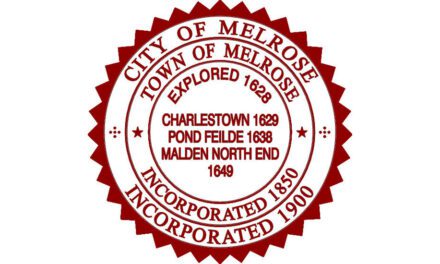Published in the June 17, 2016 edition
By JESSICA VALERIANI
MELROSE – School and city officials this week began work on solving an educational space crunch and the answer appears to be modular classes.
The roughly 30 foot by 50 foot trailers, with all site and other work, are expected to cost around $3.5 million.
On Saturday, June 11, the School Committee hosted a public forum at the Lincoln School to discuss the possible options for handling increasing enrollment and restriction issues in the Melrose public schools.
A population surge has been seen in the lower grades. As a result, there needs to be an additional 6-8 classrooms created to accommodate this increase in students for the next several years.
The Permanent School Building Committee, comprised of elected officials, Superintendent Cyndy Taymore, Mayor Rob Dolan, as well as other strong voices in the community, has been working on finding a plan that is “the best solution that meets as many needs as possible.”
“Equity, sustainability and responsiveness to the children are the three main principles guiding the decisions that will be made,” said Dolan. School committee chairman Margaret Driscoll made clear that this is a multi-step process and no decisions would be made that day. The public forum was simply a discussion to present options that have been created and receive desired feedback.
Seven options were presented to fix the class space shortage:
Option 1: Reopen the Beebe school; Option 2: Reopen the Ripley; Option 3: Convert Franklin ECC to an elementary school; Option 4: Place some kindergarten classes at the ECC; Option 5: Build an addition to Winthrop; Option 6: Modules at elementary schools; Option 7A: Move grade 5 to the middle school, and Option 7B: Move grade 8 to the high school.
The committee hopes that with whichever option is chosen, it will solve the space crunch for up to 10 years.
With all of these options come concerns. If old buildings were reopened, they would need to be brought up to speed to be comparable to other buildings. With the suggestion of modules comes the question of what would be put in those modules.
Large concerns rose over the option to move grade 5 to the middle school and grade 8 to the high school. There lies the difficult question of whether these students are ready to move. “Every child is different,” said Taymore. “Some children are ready and some are not.”
Dolan expressed his views on the importance of keeping the neighborhood school structure. “I think this is one of the anchors of our existence,” said Dolan. “A neighborhood helps to bring up a child educationally.” The neighborhood model, although it is the most expensive model, creates the building blocks of family structures that should not be destroyed.
On Tuesday, June 14, the Permanent School Building Committee voted to endorse the construction of a total of six modular classrooms at the Horace Mann, Hoover and Winthrop schools.
In a release, the Permanent School Building Committee wrote:
“For the past 20 years, the School Building Committee has been a leader in the development and management of school construction projects, including the Lincoln School, the Roosevelt School and Melrose Veterans Memorial Middle School, as well as all phases of the renovation of Melrose High School and smaller projects such as the Winthrop HVAC system and the Hoover windows.”
Dolan said, “The task of the School Building Committee at the present time is to bring forward a recommendation for accommodating increasing enrollments over the next 10 years. Since the last two years of rising kindergarten enrollments, as well as the release of the School Demographic Study performed by NESDEC (New England School Development Council) this past November, the School Building Committee has been meeting continuously to analyze projections and consider the options for managing increased school enrollment. The committee’s recommendation will now be forwarded to the School Committee for their consideration.
“(Tuesday) the School Building Committee voted unanimously to recommend Option 6, which is the addition of two prefabricated ‘modular’ classrooms each at the Hoover, Horace Mann and Winthrop schools. The Superintendent of Schools has indicated that she intends to use these classrooms to serve as music/art and library space. These spaces have been modified in the elementary schools in recent years to accommodate enrollment growth.
“The City of Melrose must plan ahead for increased enrollments. These increases will result in a shortage of 6 to 8 classrooms at the K to 5 elementary school level over the next 10 years. Overcrowding is not projected at the middle school or high school; the capacity at these schools can handle the projected student population growth.
“I voted for Option 6, and I support the School Building Committee’s recommendation for the following reasons:
Minimizing disruption to students and school communities
• Prefabricated classrooms maintain the same school configuration that exists right now, thereby causing the least disruption to the students.
• No other option allows for the school configuration to remain the same.
• Prefabricated classrooms are flexible because they can be added to other schools as needed.
• Reopening the Beebe School as a K-5 elementary school would require the forced redistricting of over 150 families, plus additional redistricting to even out class sizes in the other schools across the city.
Construction cost
Prefabricated classrooms have the lowest construction cost when compared to:
• Renovating the high school to create an 8th grade academy
• Acquiring a site and renovating it for Central Administration
Operational cost
• Prefabricated classrooms add minimal costs to the operational budget because no additional staff is required.
• Moving the fifth and eighth grades would require additional administrative, instructional and support staff.
• Re-opening the Beebe as an elementary school require a massive increase in operational costs as well as the loss of revenue generated from the building.
• The conversion of the Early Childhood Center to another elementary school would end an incredibly successful program and would require additional operational costs.
Practicality
• Prefabricated classrooms create excellent educational space and have been used throughout the country and the state.
• They are popular among communities, teachers and students.
• They have a proven track record of long term sustainability.
• There is adequate space at the three elementary schools to accommodate two prefabricated classrooms.
• Prefabricated classrooms are a long term solution.
Timeliness
• Prefabricated classrooms can be delivered in time for September 2017.
• There is currently no easily acquired rental or acquisition space available for central administration.
• Any space that is available is either too small, too large, or too expensive, and all would need to be renovated.
Adding two prefabricated classrooms at each of the Hoover, Horace Mann and Winthrop Schools is the most educationally sound, cost effective and practical solution to the overcrowding challenges at the elementary school level. It addresses the challenges associated with the projected increase in enrollment where it exists, at the elementary school level, and will cause the least amount of disruption to students.
The process moving forward
The responsibility of the School Building Committee is to formulate possible solutions to the challenge of increased enrollments and make a formal recommendation to the School Committee. Those solutions were presented to the public at the School Committee meeting on Saturday, June 11, and were presented formally to the School Committee on June 14. The School Committee will then have a deliberative process, which is open to the public for further discussions, followed by a final vote. After that, any funding order will be sent to the Board of Aldermen, who will then have a public process and a final vote to approve or not approve the funding of the option chosen by the School Committee,” Dolan concluded.




